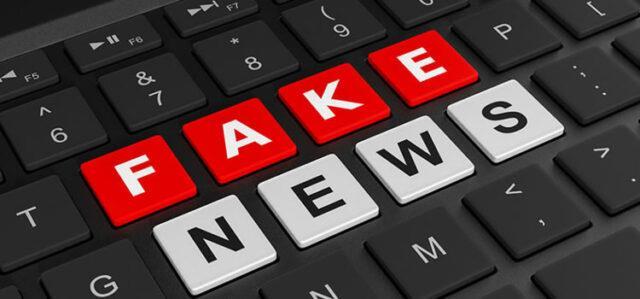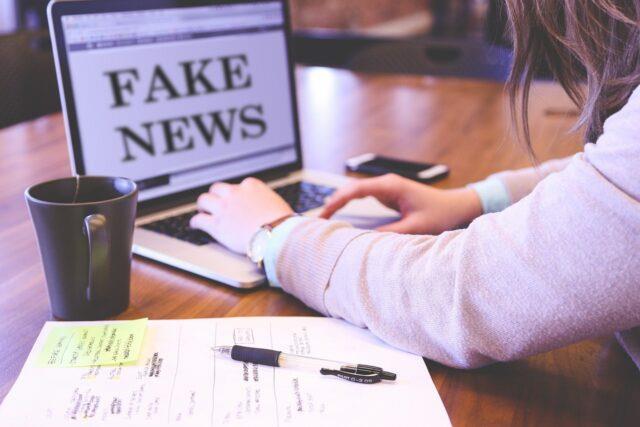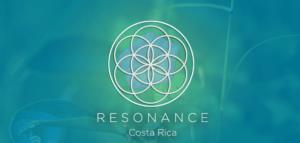(MENAFN- The Costa Rica News) By Guillermo Agudelo September 10, 2021 5 0 Share facebook twitter WhatsApp Linkedin Email
Must Read World News Guillermo Agudelo - September 10, 2021Costa Rica's Fight Against Fake News Culture & Lifestyle TCRN STAFF - September 10, 2021Mexico Decriminalizes Abortion in Historic Supreme Court Ruling Culture & Lifestyle TCRN STAFF - September 10, 2021This is How the Costa Rican Colors Were Seen in the Italian Sky On the Occasion Of The Bicentennial Celebration

report this adGuillermo Agudelo I was born in Colombia, I come from humble parents but with good habits and love for God. I had the great opportunity to grow up with a special aunt in my life, she took me to live in Salt Lake City, Utah, USA. I grew up there, I studied at Lehi High and then I started studying at BYU. In the year 2000 I returned to my land and obtained the title of Bachelor in Education Mension integral
The woman looks at the camera. She wears a scarf printed on her head and pink lipstick; Leafy leaves sway back and forth in the background. On her bare arm, clearly visible in the close-up of the shot, two coins and what looks like a kitchen magnet adhere to her skin as if by magic.“My whole arm is magnetized,” she says.
This was just one of dozens of videos and photos that have circulated around the world this year, claiming that the COVID-19 vaccine contains metals that cause patients' arms to become magnetic – one more reason not to get the vaccine.
TIP: Get our latest content by joining our newsletter . Don't miss out on news that matter in Costa Rica. Click here .
In Costa Rica, the videos were viewed on YouTube, posted on social media, and distributed via WhatsApp, a messaging app owned by Facebook. It came to the attention of the national media who consulted experts and even, in the case of entities such as the national television newscast Noticias Repretel, held their own demonstrations, with Costa Ricans smiling, recently vaccinated, looking at how coins and other metal objects fell to the sidewalk.
“I don't feel anything, but we're going to put it on,” the journalist tells a woman sitting in a wheelchair outside a vaccination center before holding a metal key on the woman's arm.
“Thank goodness,” the woman says as it falls to the sidewalk with a clink.
Messages like the magnetized arm are part of what the World Health Organization calls an“infodemic” and defines as“too much information, including false or misleading information, in digital and physical environments during a disease outbreak … With increasing digitization, an expansion of the use of social networks and the Internet, information can be disseminated more quickly. This can help fill information gaps faster, but it can also amplify harmful messages.”
These messages, of course, are part of the larger phenomenon that predates the Pandemic, but has been significantly affected and exacerbated by it: misinformation and fake news. Journalists and observers from the Costa Rican media recall watching with fear how fake news exploded in the States during the 2016 presidential elections and then, unsurprisingly, it was also shown in Costa Rica, as it has done in the majority of the world's democracies.
The year 2018 in Costa Rica revolved around the controversy related to LGBTQ + rights, so false reports on those topics abounded, as did false news related to Nicaraguan immigrants. Then the COVID-19 pandemic made the population desperate for information in a new way and ushered in the infodemic, with wave after wave of information, true and false, about how the disease spreads and how it spreads.

“We are at a turning point,” says Gustavo Román, advisor to the Supreme Electoral Tribunal (TSE) of Costa Rica.“Either as a society we find ways to regain the health of our public discussion, or living together will be very difficult.“For me, we are heading towards a ravine at this moment,” says journalist Ernesto Núñez, who has developed a verification project as part of his La Doble Tracción media outlet.
How is it that this international challenge for all democracies got so bad in Costa Rica, where a handful of national news channels and national newspapers ruled for so long? In a country that loves memes and jokes, when is fake news frivolous and when is it terribly serious? How deep is Costa Rica's polarization and what role does the media play in that process? How did we get to the edge of this cliff and what does everything look like from here?
An ascending wave In a nutshell, Costa Rica's fake news operations can be described, at the time of writing, as increasingly widespread, yet home-grown. German political scientist Simone Bunse published a report in 2020 on the phenomenon of cyber troops, which describes how political actors use the web to manipulate public opinion in Costa Rica.
“Costa Rican cyber troops are homegrown and…various political parties, civil society organizations and individuals have been involved in deliberately spreading disinformation during election campaigns, promoting populist, homophobic and xenophobic discourses against the system,” she writes . However, until 2020“cyber troops in Costa Rica have not had the level of sophistication that we have seen in Brazil, Mexico or Colombia.”
Gustavo Román, who mentions Bunse's work as a point of reference, adds that while this is good news on the one hand, disinformation methods in Costa Rica have a significant impact because they fit the country's personality.
“We still don't have evidence of a Cambridge Analytica in Costa Rica, yet,” he says, referring to the massive scandal related to the misuse of Facebook user information by the Donald Trump campaign.“However, the disinformation actions that are used in the country, not because of their nature… are less effective. Rather, their artisanal or highly tropicalized character, very appropriate to the Costa Rican context, makes them effective in terms of dissemination, and also that they are difficult to detect for the efforts made by the platforms to detect false news”.
A look back at events in Costa Rica over the past three years shows how effective disinformation has been in provoking action. In 2018, false reports that Nicaraguan immigrants were burning flags led to a xenophobic protest in the middle of San José. In 2019, Public Education Minister Edgar Mora resigned amid waves of protests, some directly linked to misinformation about the ministry's policies related to LGBTQ + rights. And in 2021, misinformation has explicitly blamed misinformation for resistance to the COVID-19 vaccine, particularly in rural San Carlos.
As these trends grew, journalists in Costa Rica did not sit idly by. A series of initiatives then emerge in an attempt to identify and report false news and disseminate verified information. An initial sweep to learn about these efforts stops a few miles from downtown San José, but it doesn't end there.
Picking your battles

Gustavo Arias began lobbying for the creation of #NoComaCuento in Costa Rica's official newspaper, La Nación, in 2016, while observing what was unfolding in the US elections.“I saw the possibility at that time for La Nación to do its part in the fight against misinformation, and a project that was out of the box of what La Nación does on social networks,” he says.
The project came to life in 2018 in the context of Costa Rica's own elections, after a marriage equality ruling by the Inter-American Court of Human Rights sparked a wave of backlash and fake news in Costa Rica. However, the project soon addressed a wide variety of topics far beyond electoral politics and, in 2020, it became frequently involved in correcting fake news about COVID-19.
Gustavo left La Nación in February 2021 and now works as a digital director at a communication agency. Today, #NoComaCuento is led by Sofia Chinchilla, who, now working from home like most of La Nación's collaborators, is assigned to #NoComaCuento part-time, with the remaining time focused on data journalism at La Nación. She goes on a grueling daily fact-checking routine. From the dining room table of her home in Cartago, she collects information about fake news circulating through a WhatsApp chatbot, email, and of course his own daily monitoring of social media groups and news pages. Over time, #NoComaCuento has learned where to look, she says.
“There are Facebook pages or profiles that tend to be repeat offenders by sharing misinformation,” he says.“We can all share a video that is not true, and we do not do it maliciously … but there are people who do it on purpose.”
She chooses the topics to focus on, consults experts in the field and generates notes on the La Nación site (No Coma Cuento pieces are offered for free and are not behind the newspaper's paywall), messages from WhatsApp and a podcast. A recent objective of this year: the story of the magnetized arm.“It was everywhere,” says Sofía.
At the same time that #NoComaCuento was finding its voice in 2018, people a few miles away on the leafy campus of the University of Costa Rica in San Pedro, were taking notice. Andrea Alvarado, UCR communications chief, hired journalist Darío Chinchilla to start a verification project called Double Check, who initially lived at Semanario Universidad.
“We knew that #NoComaCuento existed,” says Dario.“It seemed to us a very valuable initiative, however we felt that there were certain shortcomings … #NoComaCuento was mainly related to anonymous disinformation that circulated at the network level”. The Double Check team decided to add a focus on public figures and media organizations.
With the slogan“Truth over lies”, Darío and his colleagues developed a solid audience (more than 25,000 people follow the initiative on Facebook, for example), but the project was suspended in 2021 when Darío moved to Panama for family reasons; an administrative delay has prevented him from filling his position as responsible for the project, although the replacement process is underway and Doble Check has already been integrated into the UCR Radios. However, Darío, like Sofía, points to a limitation in his project that has nothing to do with staffing.
“I thought we were going to be able to reach a lot more people than we were reaching,” he says now, reflecting on the project from his home in Panama.“It turns out that there is a natural audience for these types of initiatives that are like news junkies.”
Gustavo Arias, founder of #NoComaCuento, echoes this idea that the real battle against fake news and misinformation lies far beyond Tibás or San Pedro, it is outside the GAM, or Greater Metropolitan Area, which encompasses a large part from the Central Valley of Costa Rica.
“One concern I still have is that the GAM media organizations are always talking to the same people,” he says.“Most of the media that do a serious and methodical work, their audience is the same or we are very close to each other.”
What is happening, then, in the Costa Rican news programs, beyond the excess of newspapers and national news stations in the capital? How is the fight against disinformation being fought in communities where these national media, which have fewer and fewer resources to devote to rural coverage, are increasingly irrelevant or even openly mistrust?

MENAFN11092021000216011060ID1102777074